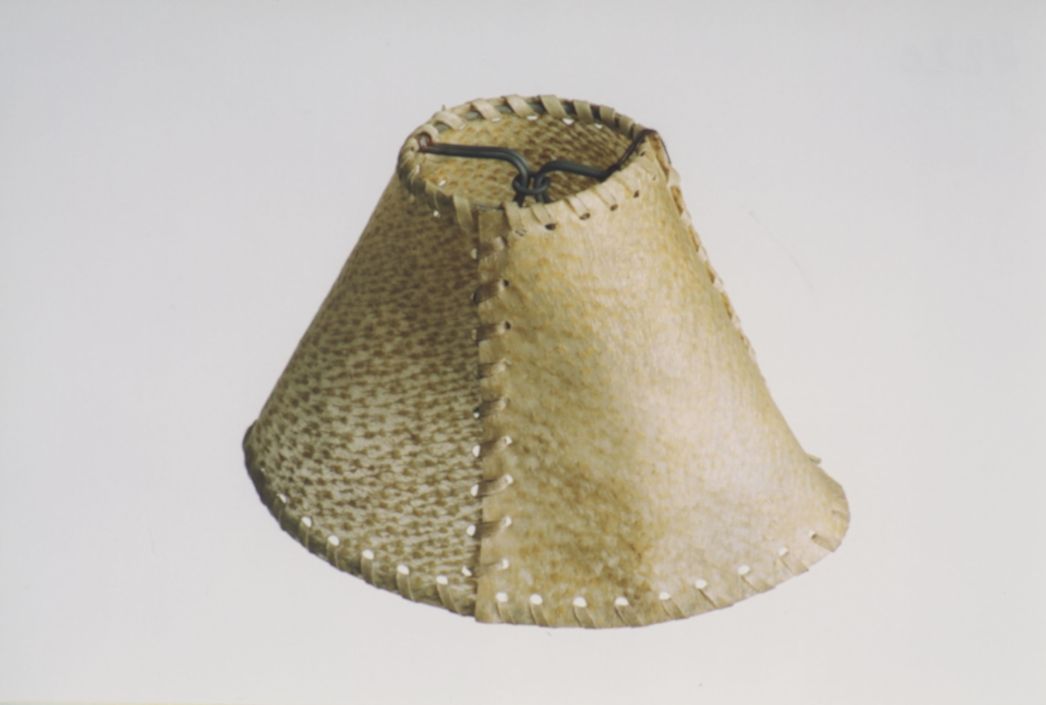
Via the General Secretariat of the Association of Persecutees of the Nazi Regime (VVN), to whom the lampshade had been handed over in the late 1940s, it ended up in the archives of the Marx-Engels-Lenin Institute of the GDR in Berlin together with other artefacts from Buchenwald. In August 1953, the lampshade and three pieces of tattooed human skin were reclaimed "for the establishment of a museum in Buchenwald". These and other objects from the Buchenwald context were then returned a few weeks later.
In the "Resistance Museum" exhibition that opened in the former inmates' canteen on 18 August 1954, the small shade of a bedside lamp was presented in "Desk 52" as a "lampshade made of human skin". Without any verification of its authenticity, the lampshade was also shown as a "lampshade made of human skin" in all subsequent permanent exhibitions during the GDR era.
The lampshade was also examined for authenticity during the fundamental revision of the collection and exhibition holdings carried out after the end of the GDR. The expert opinion drawn up by the Institute of Forensic Medicine at the Erfurt Medical Academy on 6 July 1992 stated: "Specimen IV (lampshade), however, cannot be serologically identified as human. It is possible that it is a synthetic material that was produced for lampshades at a similar time. Ultimately, however, it cannot be completely ruled out that it is nevertheless biological material."
The lampshade was removed from the historical exhibition on the basis of this expert opinion and stored in the collection depot.
Only an additional forensic report commissioned in 2023 came to the conclusion after microscopic and genetic examinations that the material of the lampshade - as originally assumed - was "certainly human skin".

